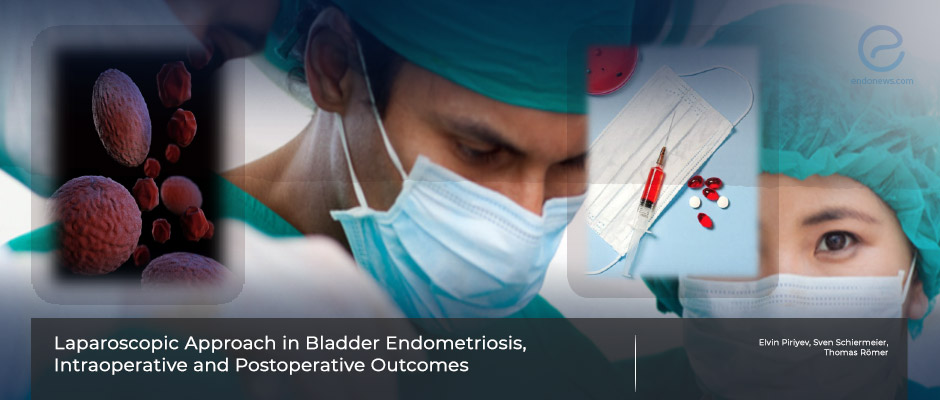Laparoscopic resection of bladder endometriosis
Mar 24, 2023
A detailed explanation of laparoscopic bladder endometriosis resection
Key Points
Importance:
- If the goal is improvement in pain and urinary symptoms, complete resection of bladder endometriosis instead of hormonal therapy is required.
Highlights:
- Gynecologists can successfully perform laparoscopic resections for bladder endometriosis.
- If the location of endometriosis is unfavorable or the ureteroneocystostomy is required, a multidisciplinary team/joining of urologists is recommended.
What's done here:
- A retrospective study was performed to present the detailed techniques of laparoscopic surgery of bladder endometriosis in a tertiary clinic in Germany.
- Out of 23,862 operations, 33 had bladder endometriosis.
- Highly skilled gynecologists performing the laparoscopic bladder resection of endometriosis explained the procedure sequentially.
- Intra and postoperative outcomes of the surgeries were analyzed.
Key Results:
- Bladder resection was performed on 30 patients, while the rest 3 cases did not require it. The most preferred method was partial cystectomy in contrast to "shaving."
- In 3 cases a urologist had to be involved in the surgery; a ureteroneocystostomy was performed in two.
. Evaluation of postoperative outcomes was possible in 25 patients who could be connected by phone. Three of the 23 cases who had partial cystectomy reported postoperative bleeding. Ureteral stenosis occurred in one patient.
. While 23 patients reported improvement in their previous symptoms, especially in dysuria, and increased quality of life after the surgery, no change was noted in 2 patients.
Lay Summary
When we talk about deep-infiltrating endometriosis, one of the most commonly affected organs in the urinary tract is the bladder, with a prevalence of 80%. Bladder endometriosis can be defined as the existence of the endometrial glands and stroma inside the detrusor muscle. In most cases, the bladder mucosa is unaffected, yet the most frequent site of involvement is the dome and base of the bladder. The source of bladder endometriosis can be primary or secondary. The secondary development of bladder endometriosis occurs due to bladder injury during surgery. Clinical symptoms are polyuria, dysuria, hematuria, and urinary tract infection. There are several options for treatment, such as hormonal therapy or surgical approaches like laparoscopic partial resection, shaving, or transurethral resection.
Dr. Piriyev et al. from Germany aimed to explain the sequences of laparoscopic management of bladder endometriosis and evaluate the postoperative outcomes in a retrospective survey. They scanned 23,869 surgeries performed for endometriosis in their tertiary clinic between January 2014 and December 2022. Bladder endometriosis was detected in 33. A phone call to inquire about the postoperative bladder dysfunction and reintervention to evaluate the postoperative outcomes was performed. Only 25 patients answered the questions.
The study was recently published in the journal named "In Vivo".
This article describes 6 steps of laparoscopic bladder endometriosis excision by highly skilled gynecologists. The authors also evaluated the postoperative outcomes.
As a final word, the authors informed that the surgery for bladder endometriosis could be performed by a skilled gynecologist. In some cases, they will need the help of a urologist and a multidisciplinary team.
Research Source: https://pubmed.ncbi.nlm.nih.gov/36593051/
bladder endometriosis dysuria dysmenorrhea dyspareunia cystectomy bladder shaving laparoscopy quality of life hormonal treatment endometriosis.

